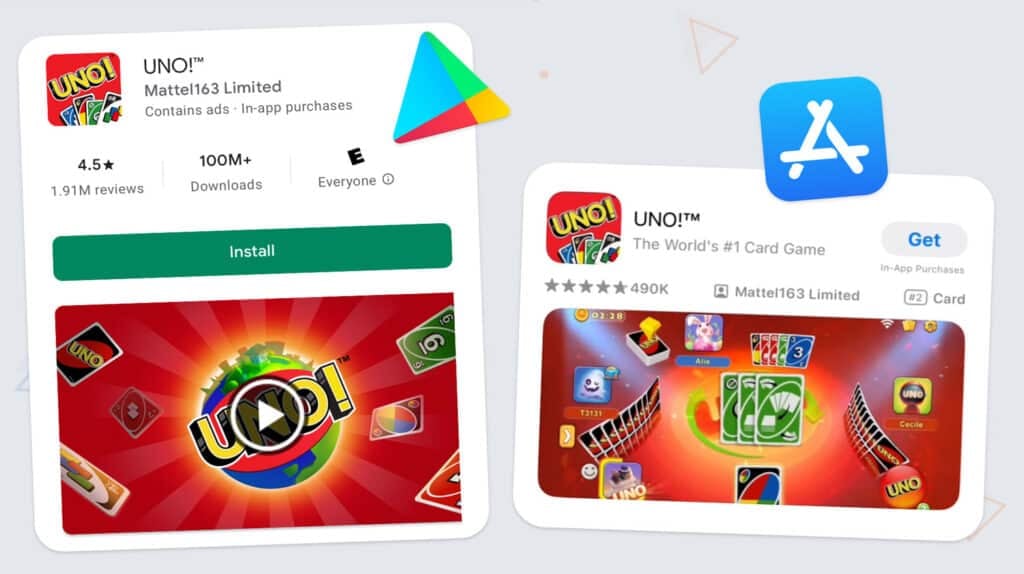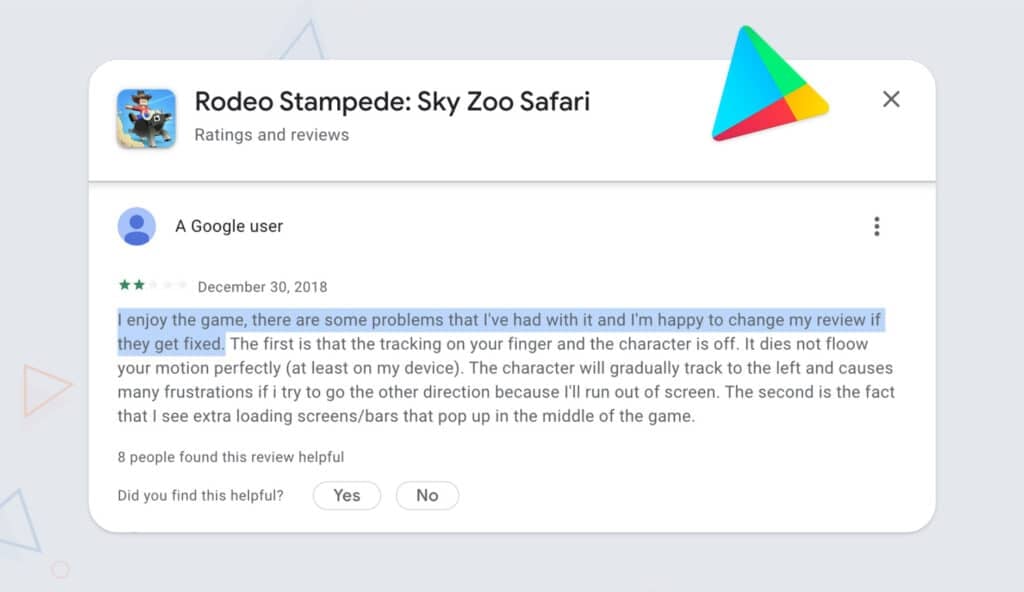Hicham Rkini, Head of Monetization & Growth | Yodo1
For game developers aiming to carve a niche in the crowded mobile gaming market, getting ASO right is critical—but it’s easier said than done. Beyond keywords, descriptions, screenshots, and icons, one often underestimated tool at a developer’s disposal is player feedback in the form of ratings and reviews. There’s a reason app stores dedicate whole sections to them! These elements don’t just reflect player sentiment; they are pivotal in app store optimization for games, directly influencing discoverability, user acquisition, and overall game success.
In this article, we’ll explore the nuances of ratings and reviews as a game growth strategy, and look at a real-world example from one of our partners, Keplerians—a name synonymous with engaging horror titles. We will dive deep into the potential of strategically managed ratings and reviews, offering game developers actionable insights to supercharge their downloads and the game’s popularity. Let’s dive in!
Ratings are a key component of any app or game listing storefront. They directly influence the player’s first impression and decision to either explore a game further or just scroll on by. Many potential players may not be diving into individual reviews before deciding whether or not to download a game, but they will inevitably see how many ratings a game has, and the average rating score. The fact that the overall ratings average and number of ratings is front and center on both the App Store and Google Play Stores’ game listing pages gives more support to the importance of this stat.

Algorithmic preference: Both app stores use ratings as a core metric within their ranking algorithms, highlighting them as key ASO ranking factors. It goes without saying, but must be said, that games with superior ratings generally find themselves with better organic positioning. However, it’s important to note that numbers matter here. A game with 5 ratings a week and a perfect score will generally not be as highly-favorited as a game with 1,000 reviews coming in per week, and a lower overall score. More reviews? That’s generally better! More on that later.
Reviews are the voices behind the scores. Each one is a gamer telling their story, pointing out the good, the bad, and the fixable. The more reviews you get, the better you understand your game and your players. This is surprisingly not front-and-center for many developers. Let’s look into why it should be.
Feedback reservoir: Each review serves as a goldmine of feedback, with potential insights into gameplay mechanics, UX/UI decisions, in-app purchase structures, and more. Imagine that players are free playtesters, exploring every nook and cranny of the game, and letting you know what they think. This is a particularly useful mindset when it comes to ‘angry’ reviews. Often, it’s a loyal player frustrated about a very specific yet fixable issue, who cares enough to let you know. They may leave a one-star review simply to get your attention. In this case, you have the opportunity to learn something critical and improve your game for other players who experience the same issue. Bonus: if you deal with this type of player respectfully and resolve their issue, they are likely to update the rating.

Quantity matters: An aspect often overlooked is the importance of frequency and quantity. In other words, how often are players leaving ratings or reviews on your game? How many are you getting per day? It’s critical to focus on getting as many as possible simply because that feeds into the algorithms that make your game more likely to be recommended. And it would then go without saying that more reviews and ratings (especially good ones) will draw more potential players, for the reasons noted above, to say nothing about the massive potential for new insights that such a boost could bring, creating a feedback loop that can drive your game even further up the charts! Here, we look at a metric called DPR, or Downloads Per Rating, which simply means the number of downloads you need to get a rating. The goal is to make this number as small as possible.
Keplerians, known for their captivating horror games, has been a Yodo1 partner since 2019. We have helped them with everything from monetization to game growth strategies. As veterans in publishing, with over 3.5 billion players and counting, ASO is well within our wheelhouse. And so we were pleased to help when Keplerians approached us with an ASO challenge. Together, we crafted a game-changing approach that sent Ice Scream 1 soaring in rankings. Here’s what happened:
Despite the strong download numbers for Ice Scream 1 since its 2019 launch, there was a disparity in the conversion to reviews. Keplerians had been counting on organic store visits for players to leave reviews. But in a space where ASO algorithms favor higher ratings and more reviews, this passive strategy was leaving a gap.

Via Keplerians
This is when we made a critical recommendation. We’ll let Keplerians’ Co-CEO and Co-founder Ion Ocasar explain it in his own words: “One of the suggestions provided by Yodo1 to increase downloads was to implement a native pop-up asking users for reviews. We implemented this feature in one of our earlier games that didn’t have such a pop-up, and it significantly improved our reviews. We are constantly occupied with new projects, and these improvement suggestions make us open our eyes to see possibilities for enhancing games that are already published.”
Strategic timing: Keplerians utilized game analytics to pinpoint ‘moments of elation’ within the game. Review prompts were strategically placed at these junctures, maximizing the likelihood of positive feedback. What is a ‘moment of elation’? It’s something to test over time, but your initial thought is probably close to the mark. Achieving a milestone. Escaping from a terrifying situation. Getting a new item. Beating a level. These are all good candidates, but testing is essential, perhaps using heatmap analytics to arrive at data-driven optimal insertion points.
The result? A meteoric rise from 2-3 reviews a day to a whopping 200-300. This influx translated into better keyword rankings, elevated DAU (Daily Active Users), and a surge in organic downloads. But the influx of reviews wasn’t just useful for ASO. Keplerians used the feedback gained for iterative development, refining game mechanics, and resolving reported bugs.
These results speak volumes. The experience with Keplerians and Ice Scream 1 drives home the point that a well-aimed ASO approach can elevate a game’s visibility and success. By tapping into player engagement at the right moments, game studios can optimize their app store presence. In a landscape where every edge counts, smart ASO practices are a must for studios aiming high.
To recap and provide a simple playbook for leveraging reviews and ratings to boost your ASO strategy, here are some key actionable takeaways.
In the competitive arena of mobile gaming, ASO, ironically (because it doesn’t cost anything), is one of the most critical differentiators when it comes to standing out among other games. Ratings and reviews, as demonstrated by Keplerians, are not mere vanity metrics. They’re dynamic tools that, when leveraged with technical prowess and strategic intent, can catapult a game to the next level of growth.
To explore this and other ways that Yodo1 can help you boost your game’s performance and scale to the next level, book a call with our growth intelligence team today!